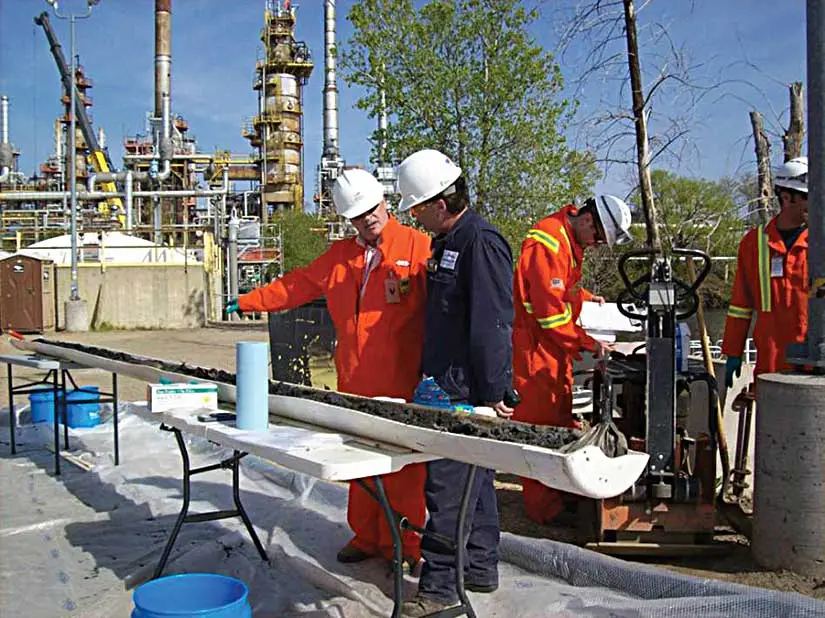Lagoon Closure at Midwestern Refinery
Client Challenge
This refining complex, along the banks of the Mississippi River, is a 107-acre facility with operations that include crude fractionation, catalytic cracking, and a hydrogen plant operation. With increased production demand, the refinery owner-operator required closure of an existing 2.9-acre wastewater treatment lagoon to make way for the construction of a new water treatment system on the reclaimed land.
GES Solution
GES evaluated alternative sludge removal and dewatering and stabilization methods to manage the design/build of the selected options. GES conducted a field investigation to develop a technically sound basis for dewatering and solidification/stabilization (S/S) technology options that would meet compliance standards while offering the greatest cost efficiency.
GES managed all permitting activities and procured and managed construction and specialty contractors to perform the earthwork, dredge the sediments, and implement the dewatering system.
Through bench-test evaluation of alternatives, GES identified two innovative technologies – hydraulic dredging and Geotube dewatering – that would offer the optimal S/S solution. Lagoon sludge was removed using a hydraulic dredging machine to facilitate mixing with the flocculent and subsequent sludge consolidation within the Geotube containment system.
A post-dredge bathymetric survey was conducted to document the new bottom of the lagoon and calculate the volume of sediment removed. In total, over 24,000 cubic yards of sediment was removed via hydraulic dredging, with an additional 3,200 cubic yards removed via wet excavation in a defined area. Chemical conditioning proved effective in consolidating the sludge and significantly reducing moisture content. Following dewatering in the Geotube containment system, the resulting cake was transported tor off-site disposal as non-hazardous RCRA waste, with loadout completed within six months of inception.
Client Value
The turnkey solution was successful in eliminating 88 to 92 percent of the estimated target volume of lagoon sediment and sludge, and enabled expedited project completion. This innovative approach – which enabled project completion within 11 months – shaved a year from the refinery construction timeline and saved millions of dollars in remediation costs over other evaluated methods.
